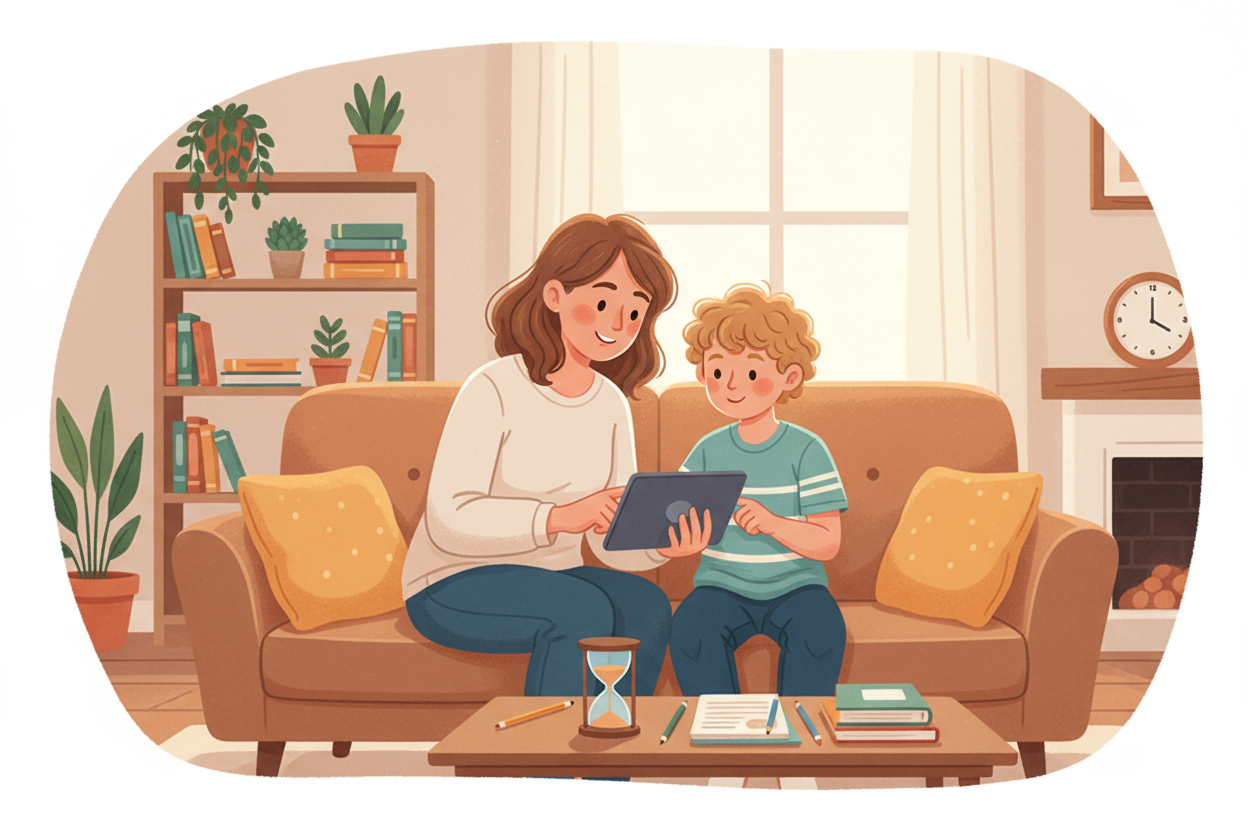Screen Smart: Simple Strategies for Parents of Primary-Schoolers
Practical, parent-friendly advice to help you balance your child’s screen use with play, creativity, and connection — the Leafwhite way.
Why Managing Screen Time Matters
Screens are everywhere — from classrooms to games to family entertainment. For primary-school children, though, too much time on devices can impact sleep, mood, and learning. The Australian Department of Health recommends limiting recreational screen time to about two hours per day for children aged 5–12.
The aim isn’t to eliminate technology, but to help children use it mindfully and in moderation. With structure, awareness, and a little creativity, parents can guide their kids toward healthy digital habits.
1. Create a Family Media Plan
When families set shared expectations, everyone feels more in control. Work with your child to establish a few clear guidelines about when, where, and how screens can be used.
- Choose screen-free times, such as during meals or one hour before bed.
- Keep certain areas — like bedrooms — device-free zones.
- Talk about purpose: Is the screen being used to learn, to create, or just to relax?
Writing the rules together helps kids take ownership. Post your plan somewhere visible and review it regularly.
2. Use Timers and Trackers
Most devices include built-in screen time tracking tools. Use them to monitor how long your child spends online and encourage self-awareness. For younger children, even a simple kitchen timer works wonders.
- Start with gradual reductions rather than sudden restrictions.
- Encourage short breaks after every 30 minutes of screen use.
- Check weekly totals together and celebrate improvement.
The focus should be on learning balance — not punishment.
3. Balance Screens with “Green Time” and “Create Time”
The easiest way to reduce screen time is to make offline life more appealing. Encourage at least one hour a day of green time (outdoor play) and create time (crafts, puzzles, art, or reading).
Hands-on activities strengthen focus, problem-solving, and imagination — skills that screens can’t replace. Keeping a list of quick, enjoyable screen-free ideas nearby makes it easy to offer alternatives when kids ask for devices.
4. Focus on Quality, Not Just Quantity
All screen time isn’t equal. Educational content, coding games, or creative art tutorials can add value, while mindless scrolling or ad-heavy games often do the opposite.
Ask yourself: “Is this screen time helping my child grow or just filling time?” Co-viewing or co-playing with your child can turn screen moments into meaningful conversations and shared learning experiences.
5. Protect Sleep and Evenings
Night-time screen use interferes with melatonin production and delays sleep. Set a rule: all screens off at least one hour before bedtime. Instead, try quiet activities like reading, drawing, or storytelling.
- Keep devices charging outside bedrooms overnight.
- Dim lights and create a relaxing evening routine.
- Model the habit yourself — unplug before bed.
Children who sleep better are more focused and emotionally balanced the next day.
6. Lead by Example
Kids copy what they see. When parents put their phones aside during meals or turn off background TV, children learn to value presence and connection.
- Have device-free family meals.
- Talk openly about your own tech habits.
- Celebrate device-free time together — make it fun, not restrictive.
Consistency speaks louder than rules. Your behaviour becomes your child’s blueprint for balance.
Quick Checklist for Parents
- ✅ Set daily recreational screen limits (around two hours).
- ✅ Keep devices out of bedrooms.
- ✅ Encourage outdoor play and creative hobbies.
- ✅ Use timers or tracking tools for awareness.
- ✅ Model healthy screen use yourself.
- ✅ Prioritise connection over control.
Final Thoughts: Raising Screen-Smart Kids
Technology is here to stay, but with guidance, children can learn to use it wisely. By combining clear rules, engaging alternatives, and mindful examples, parents can nurture healthy screen habits that last a lifetime.
Start small, stay consistent, and remember: balance, not perfection, builds confident, screen-smart kids.
